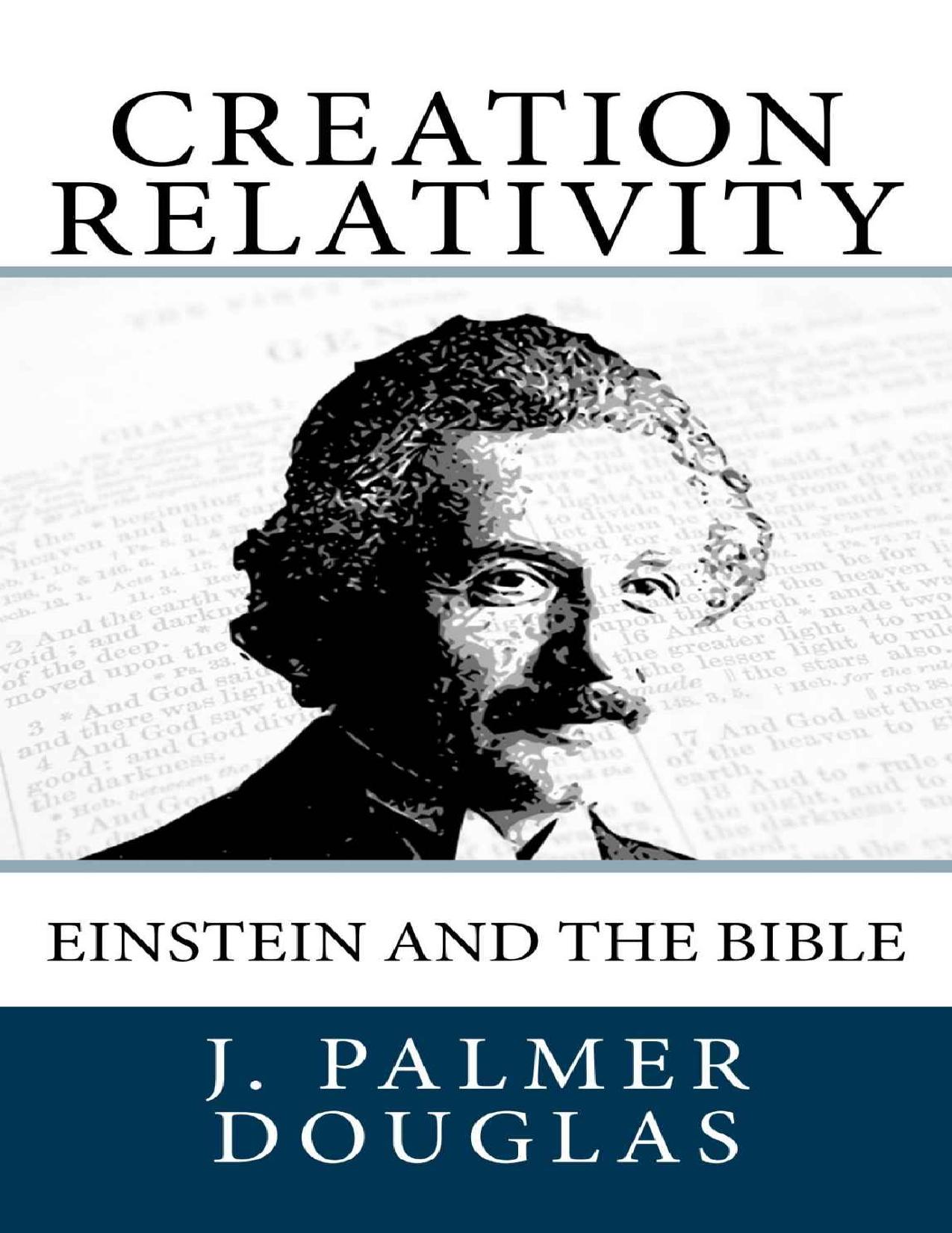Creation Relativity: Einstein and the Bible by J. Palmer Douglas

Author:J. Palmer Douglas [Douglas, J. Palmer]
Language: eng
Format: azw3, pdf
Published: 2017-02-05T16:00:00+00:00
In the Beginning
"And God made two great lights; the greater light to rule the day, and the lesser light to rule the night: he made the stars also. And God set them in the firmament of the heaven to give light upon the earth, And to rule over the day and over the night, and to divide the light from the darkness: and God saw that it was good. And the evening and the morning were the fourth day." Genesis 1:16-19
We think of time as a progressive, constant, one-directional phenomenon. Sometimes we can be so convinced by this illusion that we may even try to assign an age to the universe. When we do that we need to ask ourselves, age relative to what? Since time is relative, age is relative also. Time is undefined when two inertial frames of reference are lacking. Therefore, age cannot be determined without first defining two inertial frames of reference. However, defining inertial reference frames is not always as easy as it may seem. We cannot simply define the earth and sun as the inertial frames of reference for the rest of universe. Inertial frames of reference are only useful within the system defined by those reference frames. In other words, when we define the inertial frames of reference as the earth and sun, we are able to define a year, but one year is one year only in the earth-sun system. Elsewhere a different amount of time passes. In fact, a different amount of time passes on the earth and sun. The earth-sun reference frames only tell us about time passage on the earth relative to the sun's motion, which we define as stationary. We should point out, though, that time is no longer kept using our traditional frames of reference. Now we use the cesium atom, which releases exactly 9,192,631,770 microwave pulses per second, as our standard for keeping time. However, cesium is really nothing more than a very reliable clock. It does not transcend inertial frames of reference. In other words, one year is still based on one revolution of the earth around the sun, but the cesium atom allows us to determine very accurately how many seconds take place in that one revolution. Then, when that many seconds have passed, we can say that one year has passed on earth and we can keep that definition very consistent every year. If we were to place a cesium atom into another part of the universe, in a different inertial frame of reference, the cesium atom would release the same number of pulses each second. However, the number of seconds that took place would be different in that part of the universe during one earth year. No matter what we do or how we measure time, the quantity of time that passes is different everywhere, just like with the twin paradox described in the second chapter. When people change inertial frames of reference by changing their velocity, their personal experience of time passage is the same in all frames of reference, but a different quantity of time passes.
Download
Creation Relativity: Einstein and the Bible by J. Palmer Douglas.pdf
This site does not store any files on its server. We only index and link to content provided by other sites. Please contact the content providers to delete copyright contents if any and email us, we'll remove relevant links or contents immediately.
The Complete Stick Figure Physics Tutorials by Allen Sarah(7264)
Secrets of Antigravity Propulsion: Tesla, UFOs, and Classified Aerospace Technology by Ph.D. Paul A. Laviolette(5237)
Thing Explainer by Randall Munroe(3849)
The River of Consciousness by Oliver Sacks(3498)
The Order of Time by Carlo Rovelli(3097)
How To by Randall Munroe(2969)
A Brief History of Time by Stephen Hawking(2911)
I Live in the Future & Here's How It Works by Nick Bilton(2900)
The Great Unknown by Marcus du Sautoy(2612)
What If?: Serious Scientific Answers to Absurd Hypothetical Questions by Randall Munroe(2589)
Midnight in Chernobyl by Adam Higginbotham(2432)
Blockchain: Ultimate Step By Step Guide To Understanding Blockchain Technology, Bitcoin Creation, and the future of Money (Novice to Expert) by Keizer Söze(2409)
Networks: An Introduction by Newman Mark(2304)
The Meaning of it All by Richard Feynman(2268)
Easy Electronics by Charles Platt(2252)
The Tao of Physics by Fritjof Capra(2204)
Midnight in Chernobyl: The Untold Story of the World's Greatest Nuclear Disaster by Adam Higginbotham(2126)
When by Daniel H Pink(2057)
Introducing Relativity by Bruce Bassett(2048)
